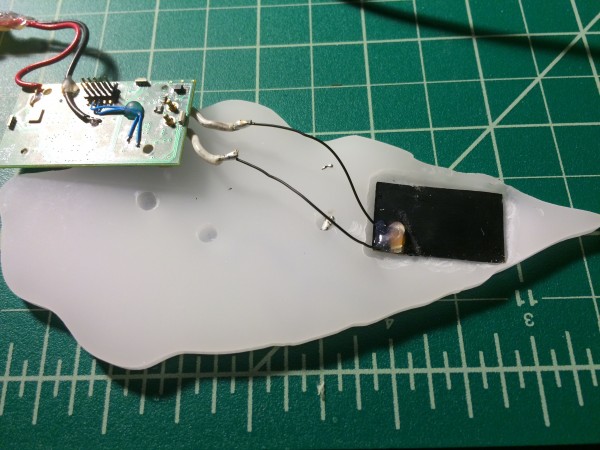Home › Forums › Ask the Flomies › FloBLE Mini questions
Tagged: BLE, FloBLE Mini, RFID, UHF
-
AuthorPosts
-
March 3, 2016 at 6:08 pm #54678
A few questions to richard? I’ve had a couple of phone calls with you re FloBLE Mini today and yesterday.
1) how thick is the unit with the batteries in?
2) can it read ISO 15693 like it says on the website?
3) What is the read range?
4) Would it read cards through a table (if the reader was under the table)?
5) can the beep when reading tag be silenced?
6) how quickly does the device go to sleep? can the interval be changed? does the button need to be pushed to wake?
7) whats an externally mounted antenna?
8) What would be a cheap solution for housing the prototype device?
9) How did your meeting go re going into production? I hope very well. Please let me know.
10) If you do go in to production can you guess how long before we could get our hands on them.sorry for so many questions.
Guy
March 6, 2016 at 11:04 pm #54698Hi Guy, thanks for posting.. Answers inline below:
1) The FloBLE Mini is roughly 12mm thick with batteries.
2) Yes, it can read ISO15693 tags
3) Read range varies based on geometry of antenna and tags used.
4) Yes, the design is capable of reading through a table material (wood)
5) FloBLE Mini doesn’t have a buzzer so it won’t generate any sound.
6) The time-to-sleep of the FloBLE Mini is adjustable via the API. Side button will wake device from sleep.
7) An externally mounted antenna means that the antenna is separate from the Printed Circuit Board (PCB).
8) A cheap solution for an enclosure housing would be a matchbox.
9) How did your meeting go re going into production? -Meeting went well. No orders placed though. These conversations take time to evolve.
10) If you do go in to production can you guess how long before we could get our hands on them. -Would take roughly 2 months ramp up production, then a couple weeks for initial testing before shipping units to customers.best,
RichardMarch 7, 2016 at 9:45 am #54704Thanks Richard, a few more questions Im afraid:
1) What would the antenna look like? how big would it be? Do you have any links to the antenna you can show me?
2) If you went in to production with the final product would it be thinner than 12mm?
Would the width and length stay the same or decrease?
3) If we developed an app to work with the $300 prototype, would it still work with the final product? IE, can we do the app development with the prototype and still have it work with the final product?
4) Do you have a picture of the FLOBLE mini with all the other components such as the batteries and the antenna attached?
5) Can they be made to be longer and not so wide – so say 60mm by 15mm rather than 40mm by 22mm?
6) How much would a run of 2000 floBLE minis cost per unit? Would this quantity justify a production run?
7) How much does one unit weigh? I’m not sure the weight is right on your site.
8) Would the read range be the same on the prototype and the final product if the same antenna was used?thanks again Richard.
March 8, 2016 at 10:00 am #54716Here are some thoughts on your remaining questions.
1) There are different shapes and sizes of antennas available from many different vendors. Here are some we like from a cost and quality standpoint.
2) Our current FloBLE Mini PCB design is 10mm x 22mm x 40mm. We won’t be changing sizing dimensions unless the customer that commissions the production run requests such a change.
3) All apps developed with the FloBLE Mini prototype will be supported on whatever production units we make.
4) This is the best picture I could find right now. Shows PCB and antenna assembly. It operates with 2 CR2032 coin cell batteries (not shown). Each large tick mark on the green mat is 1 inch.
5) Yes, geometry can change but would require some engineering and testing to make sure performance is not impacted.
6) 2000 units is definitely a compelling amount for production. Cost per assembled+tested PCB units would be around $25 at that quantity.
7) FloBLE Mini with 2 CR2032 batteries weighs 0.4oz or 10g. The weight of the batteries alone is half the overall weight.
8) Yes, the read range would be the same between prototype and production unit.best,
RichardMarch 11, 2016 at 7:54 am #54753Hi Richard,
I understand I would have to purchase the SDK Pro to get this prototype working. The website says…
Support for iOS (Android and Windows Phone coming soon)
My question is, has the support for Android arrived yet? And if not when could we expect it please?
many thanks
Guy
March 15, 2016 at 5:45 pm #54777Support for Android SDK is in beta for the FloBLE Plus. It will take 2 weeks of development time to add support for the FloBLE Mini.
thanks,
RichardMarch 16, 2016 at 4:44 am #54786Will the mini work with these batteries? http://uk.farnell.com/multicomp/cr1220/coin-cell-lithium-3v-38mah-cr1220/dp/2065165
thanks
Guy
March 16, 2016 at 5:46 am #54787In theory yes, but in practice it’s hard to say. Coin cell batteries depending on quality can exhibit what’s called a “collapsing effect”. This is when the current pulled from them exceeds their internal ability and quickly causes their voltage to drop dramatically. Because the FloBLE Mini may need to activate the NFC interface while the BLE radio may be working, sometimes these two activities will overlap and therefore current will spike and some smaller coin cells will collapse and reset the device operation. We will need to test and see what can be done to address the smaller battery requirement.
best,
RichardMarch 16, 2016 at 7:44 am #54789Thanks Richard,
Can I arrange for 2 of these batteries to be sent to you, so you can have a check please?
thanks
Guy
March 16, 2016 at 11:09 am #54793Sure, but we won’t be able to do much other than test them out. You can ship them to our office at:
Flomio, Inc.
7171 Bay Dr. Ste 9
Miami Beach, FL 33141thanks,
RichardMarch 18, 2016 at 7:29 pm #54820Hi Richard, Ive sent you in the post two smaller 3V batteries for you to test with the FOLble mini. I hope they work as they are not as big from a diameter point of view. Please can you let me know how you get on. Also is there a private email address for you so we could have more private chat.
thanks
Guy
March 19, 2016 at 4:12 pm #54825Hi Guy, I’ll let you know once they arrive. You can email us privately at info at flomio dot com.
best,
RichardAugust 19, 2016 at 3:40 pm #56278Hi Flomies,
I have two separate questions about the FloBLE mini since I am interested in using it in a custom wearable device for research.
1) how long will the unit last , with some good batteries, if set to always on ?
2) If the desired application is to detect only tags within a foot or less is an external antenna even needed ? What is the range w/out an antenna?Thanks,
RickAugust 19, 2016 at 6:58 pm #56280Hello Rick,
1) It will depend on how many scans it makes, but it can go from weeks to months.
2) FloBLE Mini is a NFC reader so the maximum range is one (1) inch. If you need to detect tags in longer distances you may want to use an RFID reader, perhaps you can give us a little more feedback about what you want to do so we can recommend the right reader for your needs.Cheers,
Boris.
August 19, 2016 at 7:55 pm #56281Hi Boris,
Thanks for the information. My main objective is to record and measure the interaction between person and object. For example, if a tag is on a computer mouse, I want to be able to measure precisely how much time person is using mouse via a wrist worn a reader.
A small enough RFID reader might work, or maybe an iBeacon detected by a BLE device. I read about both of these. The FloBLE Mini stood out as the product that seemed most suited to detection then communication with a device (like a phone).
If you are familiar with either an RFID or BLE device might work better I would value your advice, thanks.
August 20, 2016 at 7:43 am #56284Hey Rick,
Based on what you’re saying RFID may not be your best option. First RFID antennas require them to be bigger than what you seem to need, we work with U Grok It devices (https://www.ugrokit.com/) and they work fine but they’re big in comparison with a FloBLE Mini.There are other devices in the market that are significantly smaller but they won’t offer all the required UHF functionality. Second, both RFID and NFC are polarized technologies, this means that orientation matters. For a random moving scenario like the one you described it’ll be possible to track the tag only when you’re wrist is oriented in a certain way, so it may not be the best solution.
As you mentioned BLE seems to be your best solution, you may need a motion activated device to preserve battery life and detect other devices around only when necessary. You don’t even have to connect to them since you may be able to get all the information you require from the BLE advertisement packages.
Hope this helps!
B.
-
AuthorPosts
You must be logged in to reply to this topic.




